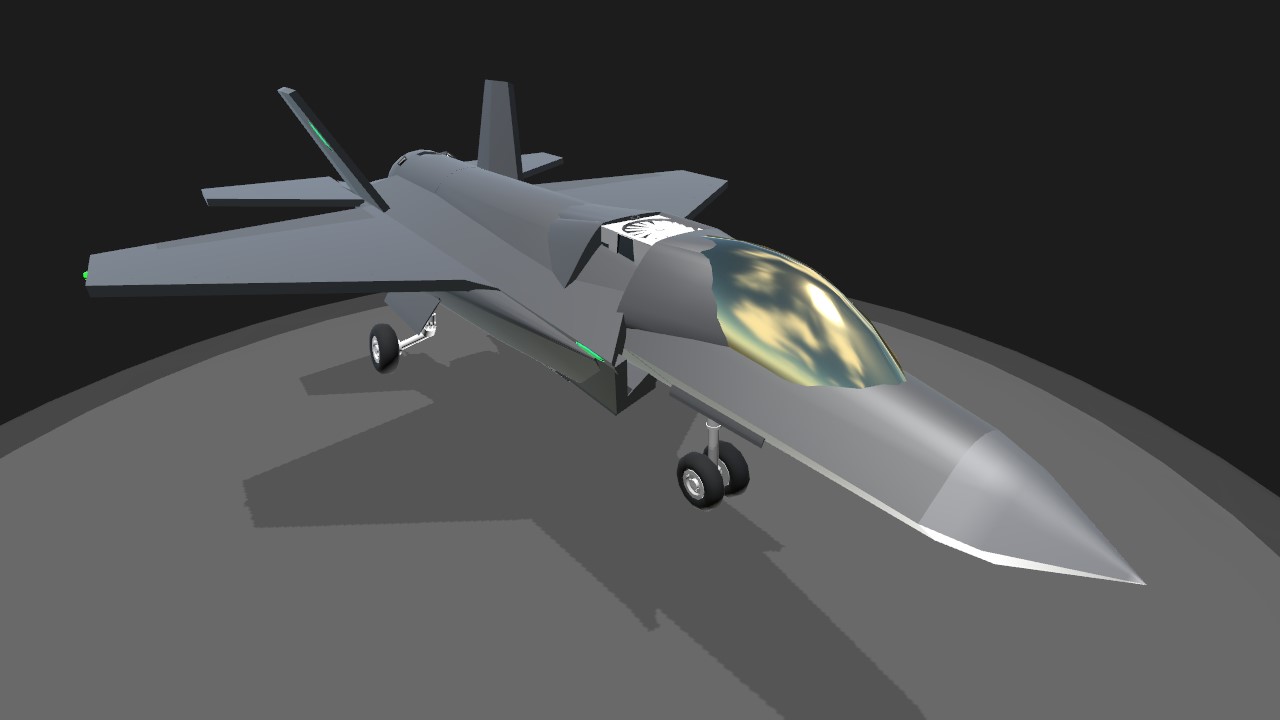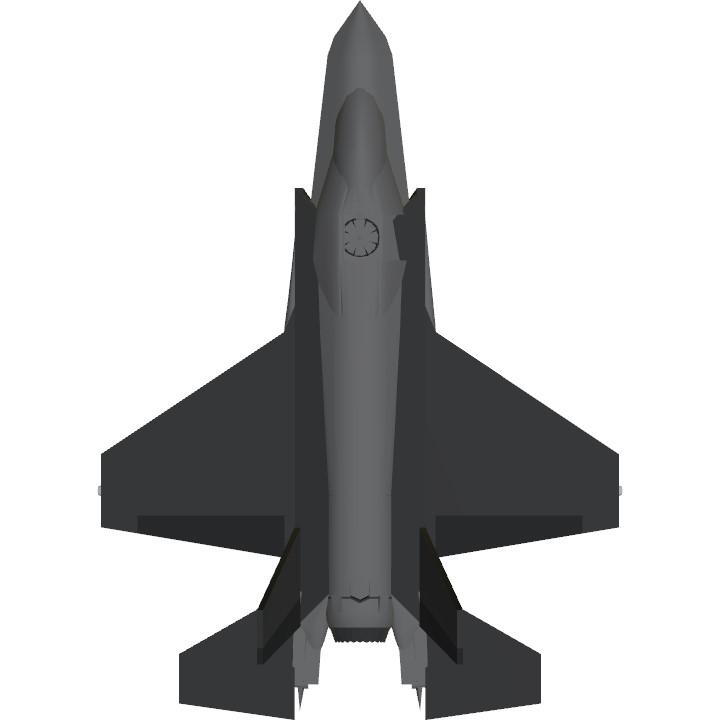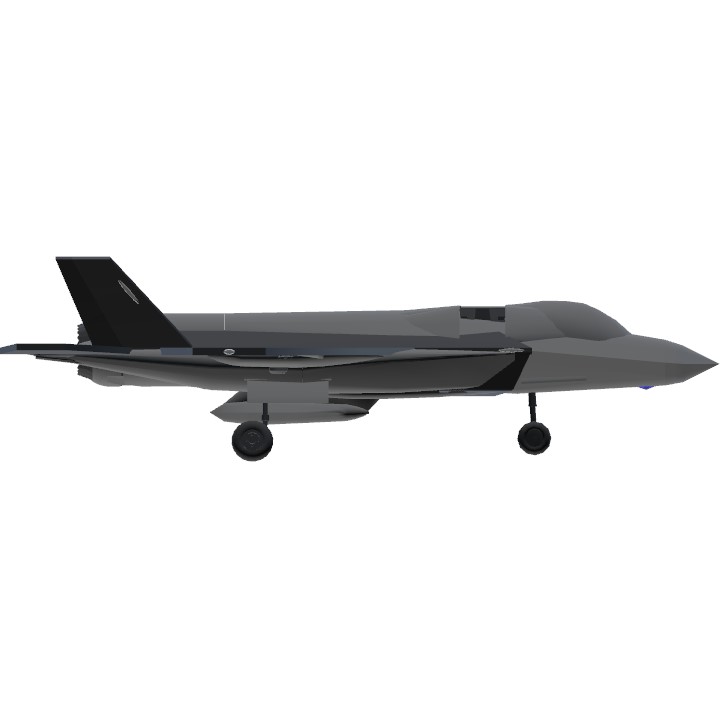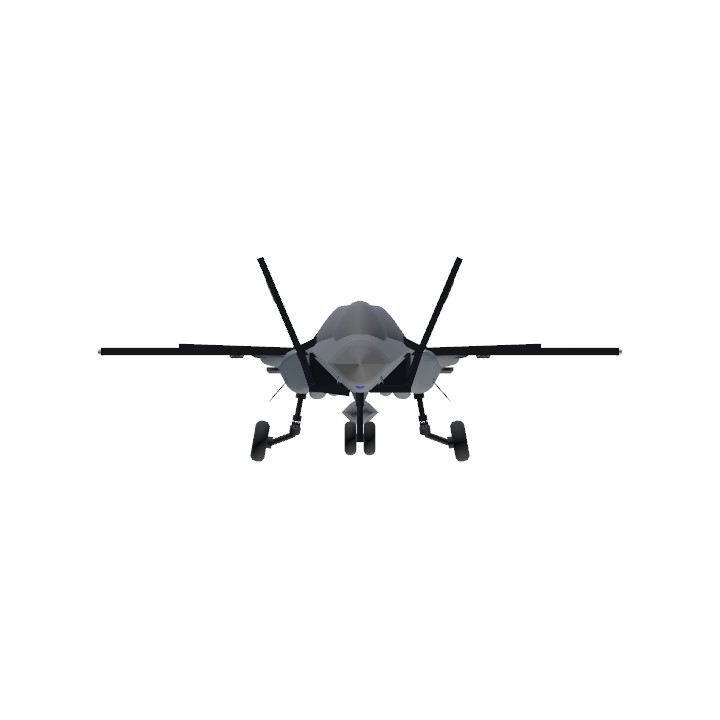How does the real F-35B manage its rear stabilizer wings when transitioning from STOL to conventional flight?! In real life it happens automatically, but I don't even understand how it would work manually! To test it, I set up this plane to invert pitch inputs when VTOL<0...
.
The internet is scarce on how the real plane actually manages its rear stabilizer wings when transitioning from STOL to conventional flight while simultaneously accounting for lift, pitch angle, user input, rear engine direction, front lift fan force, airspeed, and I don't know what else.
Note to self: this version has a variant of my modded weapon and the original flight physics. The next uploaded version of this plane messed up the plane’s handling but does come with a complete version of my modded weapons. That’s why I titled it “Thunder Stroke,” for the weapon.
Specifications
General Characteristics
- Predecessor Thunder Stroke (F-35) modified i think
- Created On iOS
- Wingspan 23.4ft (7.1m)
- Length 32.2ft (9.8m)
- Height 8.9ft (2.7m)
- Empty Weight 13,419lbs (6,086kg)
- Loaded Weight 15,911lbs (7,217kg)
Performance
- Power/Weight Ratio 7.414
- Wing Loading 33.1lbs/ft2 (161.6kg/m2)
- Wing Area 480.8ft2 (44.7m2)
- Drag Points 3439
Parts
- Number of Parts 209
- Control Surfaces 12
- Performance Cost 1,441





Hello, smart people. May I pick your brains?
@Destroyerz117
@hardy57
@Leehopard
Hello, smart people. May I pick your brains?
@karameji
@Falkenwut
@jamesPLANESii
If lift on rear wing lift is larger than base value of lift authority, (a function of airspeed and lift) give it less authority.
No. If rear wing lift force greater than front engine nozzle force, adjust rear wing based off of pitch rates. This way the plane can’t flip due to unbalanced lift forces. Otherwise, maximize rear wing lift angle and rely on rear engine to add force via angling, not throttling, downwards, so that the sim of rear wing lift and engine’s angled thrust is equal to front engine‘s lift.
This way you maximize lift and speed at all times. Reducing thrust will auto point rear engine down after the plane slows down.
I'd probably just take the easy way out and have a gyro keep the plane stable while the stabilizers move into place? idk, maybe there's a better way to do it using funky trees but I'm not great with that stuff
please ignore this comment. I want FRESH IDEAS!
my ideas to try:
* 4? See if rate pitch angle is going in the direction it should. Otherwise, flip user input.
* 1. Control stabilizer based on plane's pitch angle instead of raw user input.
* 2. Air speed determines how heavily pitch input and rate(altitude) control stabilizer. Slow = rate(alt) takes priority/authority, fast = pitch input has more priority/authority.
.
Basically, if the lift force on the rear wings exceeds a certain amount, where it provides enough torque to jerk the plane's pitch and increase the AoA a lot, make it move less. [How? Try using TAS, rear wing force, and pitch angle's acceleration somehow? If front lift fan force is less than the rear engine and Horiz stabilizers vertical force combined, set rear engine and rear wings to invert]
.
p.s. When the rear stabilizers lose authority or lift, that’s when the rear engine angle should be changed, to serve its purpose.
* 3. If AoA is beyond a certain point, make horizontal stabilizer counter the AoA to straighten out.
[Try taking engine rotator code, tweak altitude for AoA and keep pitch settings.]